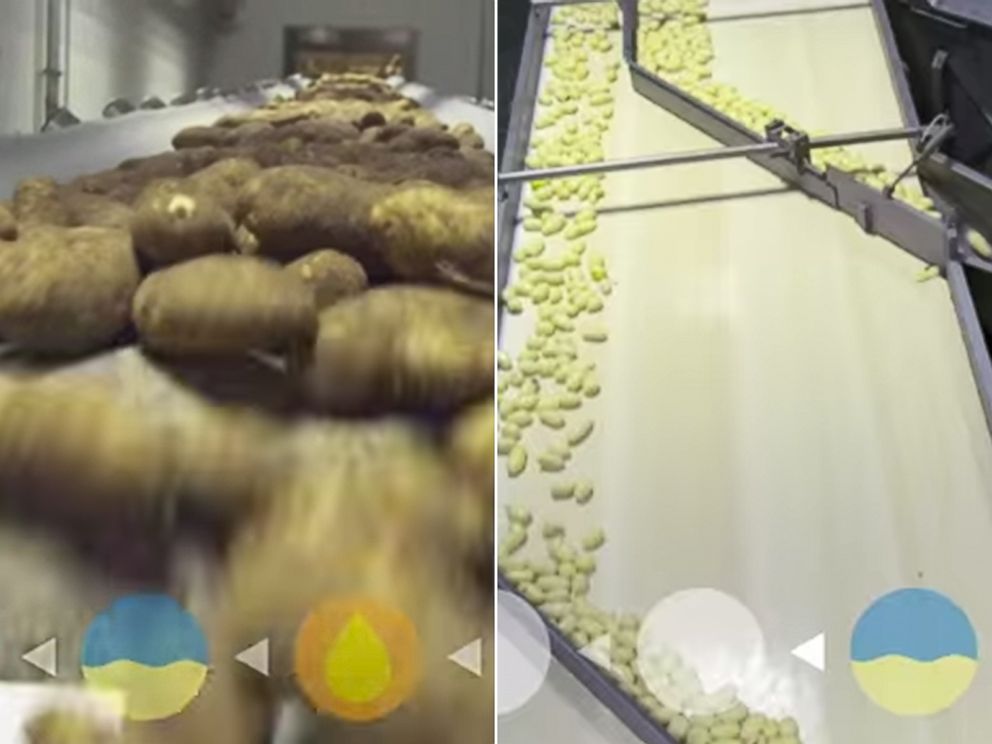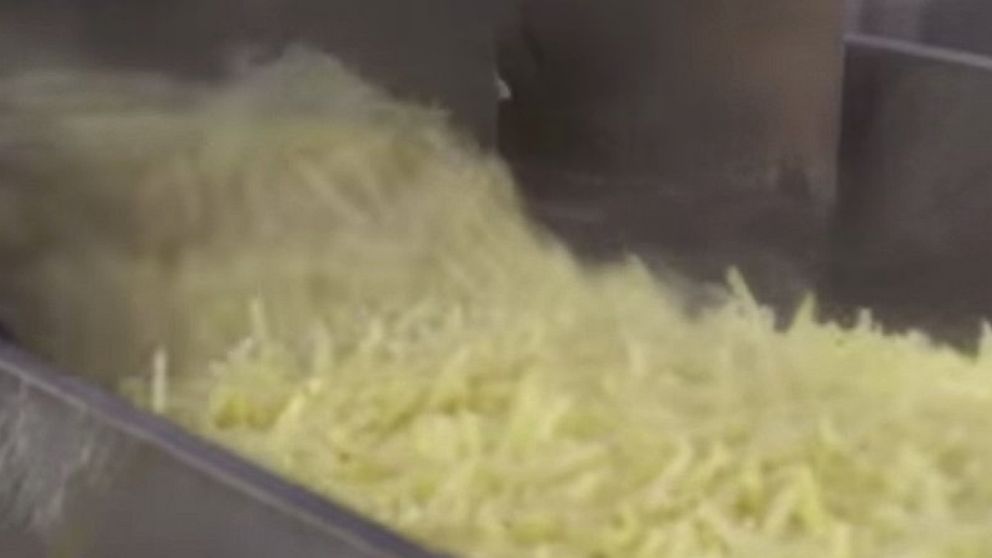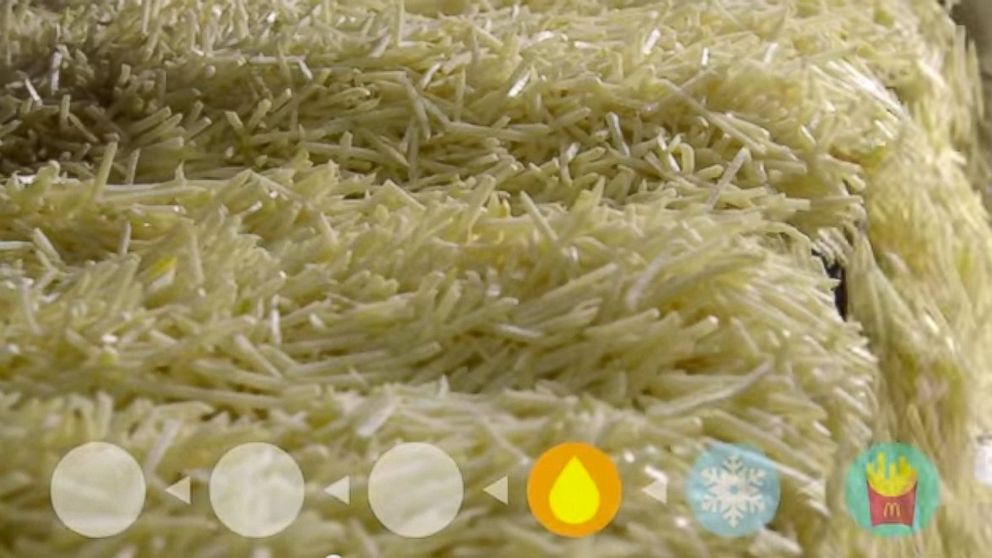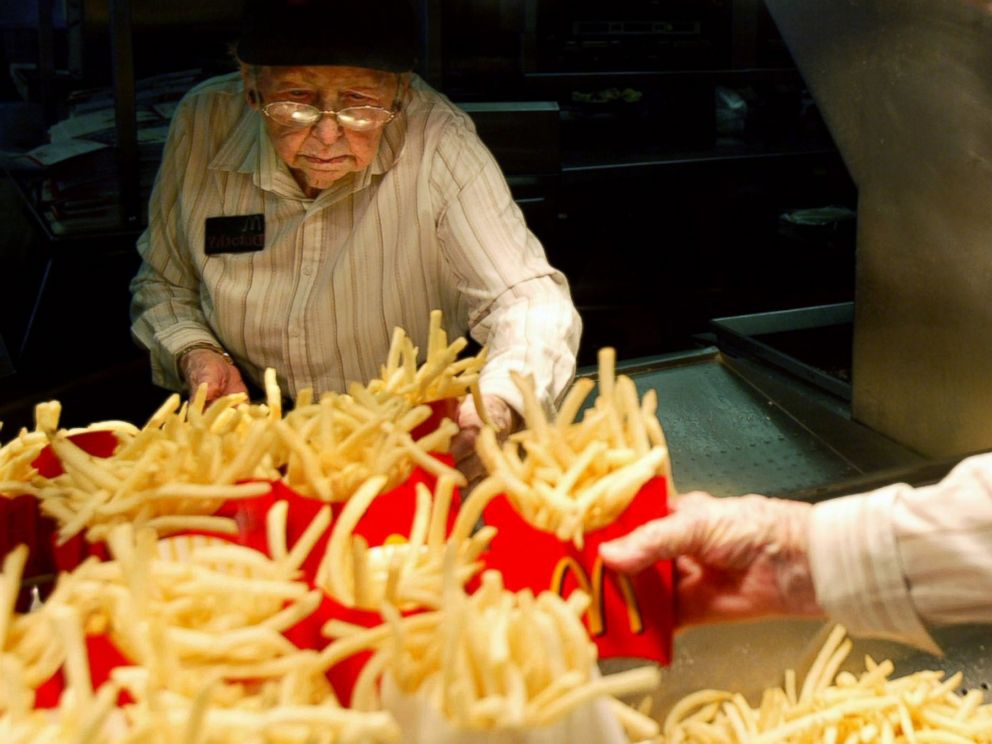McDonald's Reveals Exactly How Your Beloved Fries Are Made
Here's what a nutritionist thinks of the process.
— -- Ah, McDonald’s French fries. It’s hard to find someone who doesn’t like the American classic, regardless of their thoughts on the fast food chain.
It’s always been a bit hazy, though, how exactly McDonald’s makes their addictive potato sticks -- until now. McDonald’s released the above video detailing the process, which we’ve broken down for you below, along with registered dietician Georgie Fear’s take on the ingredients.
Step 1: Peel, Cut and Blanch

The fast food chain uses non-GMO potatoes, including shepody, ranger russet, Umatilla russet and russet Burbank varieties. Once arrived at the plant, the potatoes are peeled and forced through a cutter at 65 MPH to make uniform fries. They’re then briefly immersed in hot water to remove excess natural sugars for color reasons. According to McDonald’s, blanching also eliminates enzymatic activity which prevents spoilage and develops a fluffy interior, similar to a baked potato, for better texture.Step 2: Dip in “Ingredient Bath”

This is the most unnatural step of the process. The now-cut and blanched fries are dipped in an “ingredient bath” which consists of dextrose and sodium acid pyrophosphate. The dextrose, a natural form of sugar, is to help achieve a uniform golden color and the sodium acid pyrophosphate prevents the potatoes from turning grayish after they are cooked, according to McDonald’s.
Fear said these ingredients are of no health concern. “Dextrose is simply a sugar that occurs naturally in our blood,” the author of “Lean Diet” told ABC News. “As for the sodium acid pyrophosphate, when potatoes are cut and then exposed to air, they turn a green, greyish-brown color which isn’t very appealing to the end consumer. This chemical keeps them nice and white-looking. To my knowledge there is no data of any health concerns from sodium acid pyrophosphate.”
Step 3: Dry & Quick Fry

Next, the fries are dried and partially fried to ensure a crisp exterior. McDonald’s not only fries the potatoes in a mix of oils – canola, soybean and hydrogenated soybean – but also adds natural beef flavor derived from beef fat that contains wheat and milk derivatives for flavor, citric acid for preservation and dimethylpolysiloxane to reduce oil foaming and extend the quality of the oil life, according to McDonald’s.
The only thing to note about the beef fat for Fear is that it makes the French fries no long vegetarian, and for those with wheat or milk allergies, the fries could trigger reactions.
“Wheat is often used for non-clumping. I do not know McDonald’s’ process at all but my expectation would be that the wheat and milk derivatives are added to the flavoring to make it a usable powder,” Fear said. “Citric acid is completely benign found in fruit. I haven’t heard of dimethylpolysiloxane, but since I work in the health field I would probably have heard of it if it were a health concern.”
Step 4: Flash Freeze

The fries are then flash frozen, which is how they arrive at the restaurants.Step 5: Ship & Cook in Restaurants

When you’re ready to order, the restaurants cook the fries for a third time, frying them in more oil. This time, it’s a vegetable oil blend of canola, corn, soybean and hydrogenated soybean oils. There’s also TBHQ, an antioxidant that extends the shelf-life of the oil and acts as a preservative for the oil, citric acid for freshness and more dimethylpolysiloxane to help reduce oil spattering, according to McDonald’s.
"TBHQ is an antioxidant that prevents oil from going rancid,” Fear explained. “The Food & Drug Administration as well as the European Food Safety Administration have both determined it to be safe in quantities under .02%, so as long as McDonald’s is not adding it above the legal limit, there should be no concerns.”
Finally, the chain adds salt after the fries are cooked, though you can request unsalted.
Out of the 19 ingredients in the French fries, surprisingly only one is of concern to Fear.
“For the consumers, they see this long list of more than 10 ingredients and many of them look like big, long, alien chemicals. However to a nutritionist with expertise in biochemistry, the one that makes me not eat McDonald’s French fries is hydrogenated oil,” Fear said. “Hydrogenated oils are a source of trans fat, which is shown to be negative for human health in many ways.”
Hydrogenated fat is often present in solid shortening, vegetable shortening and some margarine. Liquid canola and vegetables oils do not contain it.




